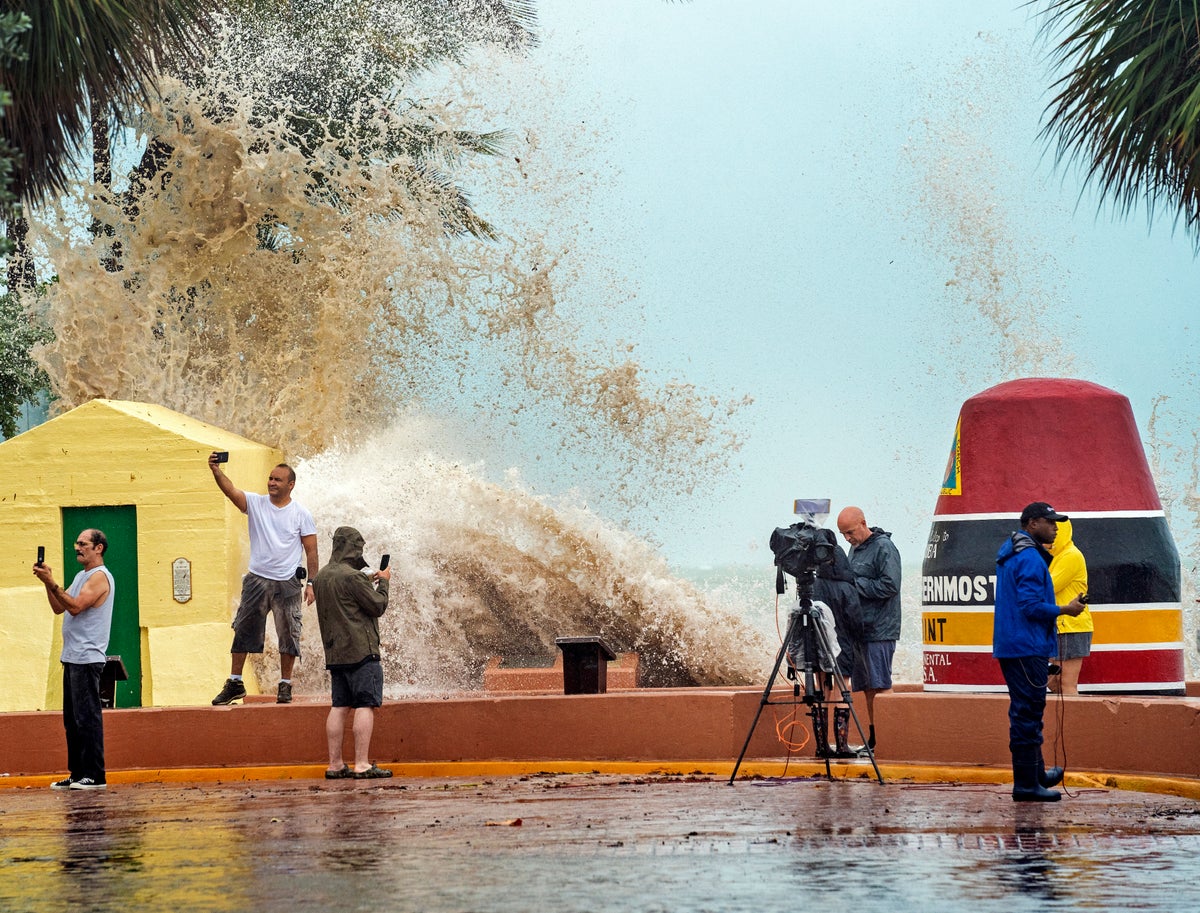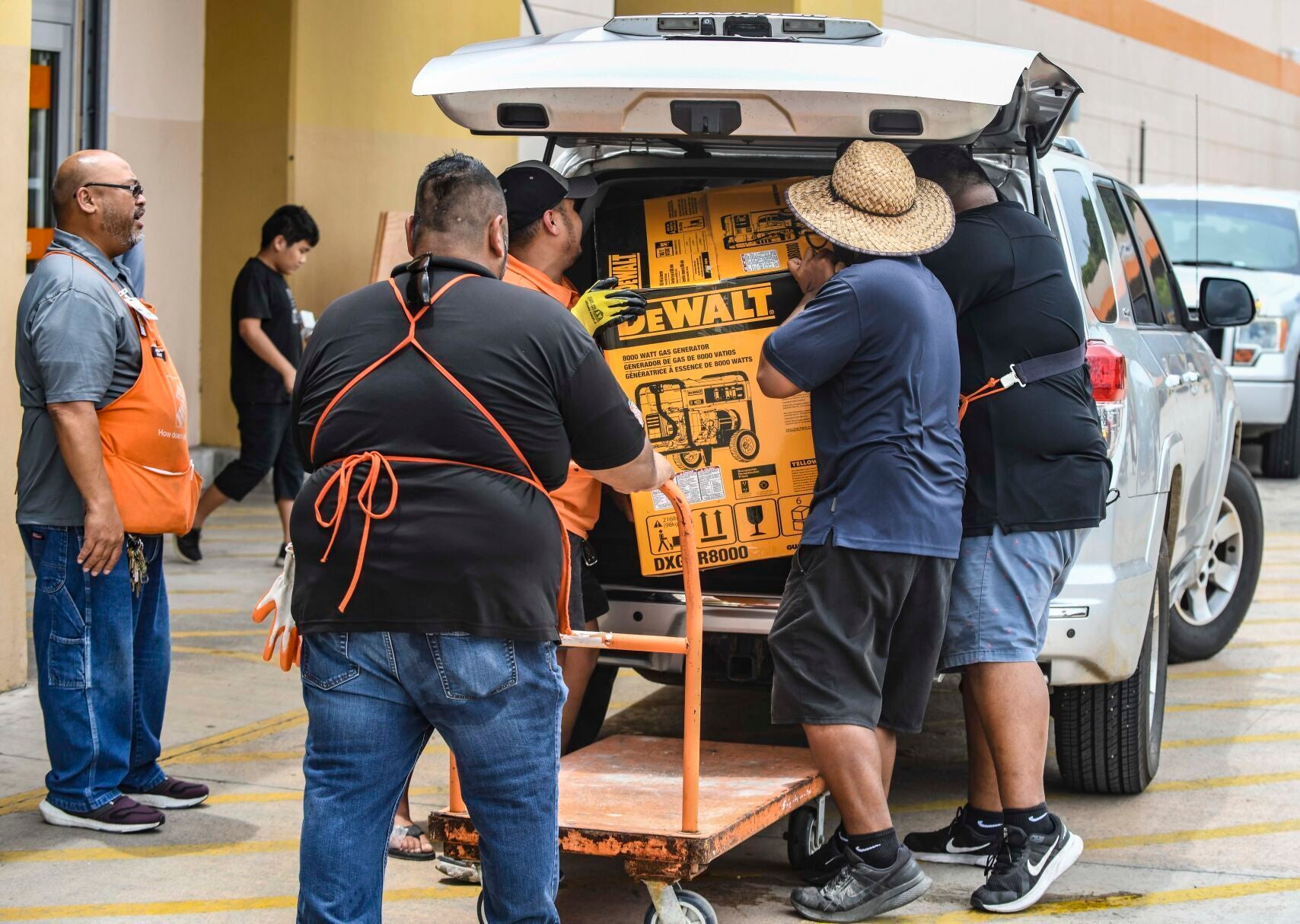
Authorities in Guam warned anyone not living in a fully concrete house to head to safety elsewhere, and emergency shelters began to fill as residents braced for Typhoon Mawar, a powerful storm that could deliver the biggest hit in two decades to the US territory in the Pacific.
Governor Lou Leon Guerrero urged residents in a YouTube message to remain calm and prepare for Mawar, which the National Weather Service said could hit southern Guam around midday on Wednesday. She ordered the National Guard to help those in low-lying areas evacuate ahead of the storm as residents stocked up on jugs of water and generators.
If Guam doesn’t take a direct hit, it will be very close, said Patrick Doll, the lead meteorologist for the National Weather Service in Tiyan, Guam.
As the global average temperature increases and sea levels rise, tropical cyclones - the catch-all term for hurricanes and typhoons - are expected to become stronger and the damage more catastrophic, scientists say. (In the Atlantic Ocean, hurricane season starts on 1 June.)
Research on 2017’s Hurricane Harvey in Texas found that global heating made rainfall during the days-long deluge 15 per cent more intense. Another study on 2019’s Typhoon Hagbis in Japan found that the climate crisis added at least $4billion in additional damages.
Sea-level rise is one way that the climate crisis is making these storms more dangerous. As the oceans rise, due to melting polar ice sheets and increased heat expanding the water, coastal cities like Tokyo and New Orleans will be more likely to be inundated during storms.

Since the late 19th century, global sea level has risen by eight inches – threatening coastal communities and increasing flooding risk when storms push water inland.
Rising sea levels can also wipe out natural coastal defences against hurricanes such as wetlands of marshes and swamps that buffer storm surges and winds.
One 2020 study found that in nearly 90 tropical storms from 1996 to 2016, US counties with more wetlands had less property damage. The study put an average value on those wetlands of $1.8m in protection per square kilometre per year.
Another study looked at communities around Chesapeake Bay in the US Northeast and found that if worsening climate change causes a large increase in sea level rise, losing wetlands could more than quadruple flooded areas from a storm and add more than $8bn damage.
Even without sea-level rise, hurricanes are expected to become destructive as the ocean heats up.
Greenhouse gas emissions, from burning fossil fuels, are trapping more heat near the Earth’s surface. Scientists have calculated that about 90 per cent of the excess heat generated from emissions has been absorbed by the ocean.
Since 1901, the top layer of the ocean has become about 1.5C hotter, according to the Woods Hole Oceanographic Institution in Massachusetts.
Warmer air and water fuel hurricane growth, powering intense winds and sending water into the clouds. The US National Oceanic and Atmospheric Administration (NOAA) says that the climate crisis’s impact on hurricane power is “like adding fuel to a fire”.
In the past 40 years, the proportion of cyclones that reach at least Category 3 strength — wind speed at least 111 mph (178 kph) — has increased, says the United Nations’ Intergovernmental Panel on Climate Change (IPCC), the leading authority on global climate science.
Hurricanes cause more damage if they linger over the coast, and their slowing down may also be a result of the climate crisis. In the past 70 years, hurricanes have slowed by 10 per cent, one study found, but there isn’t scientific consensus on why,
Hurricane Harvey was notoriously slow to dissipate, hanging around the Texas Gulf Coast for days and dropping upwards of 40 inches of rain in some areas.
It meant devastating flooding. During Harvey thousands of homes were damaged or destroyed and more than 100 people died around Houston, Texas.
There is one measure of hurricanes that may not be getting worse with the climate crisis. Despite recent years with an above-average number of Atlantic hurricanes, the IPCC says that there is not a strong trend toward more tropical storms each year.
According to Yale Climate Connections, some research indicates that there might even be slightly fewer hurricanes as the climate crisis worsens, due to changing wind patterns.
Conditions vary from year to year. In 2022, for example, NOAA has predicted a higher-than-average Atlantic hurricane season partly due to warmer ocean waters and ongoing La Niña conditions.
For the most part, scientists are telling the public to brace for harsher storms with more severe impacts.
In the past four years, the world has faced down major crises like Hurricane Laura in Louisiana, Hurricane Dorian in the Bahamas, Tropical Cyclone Idai in Mozambique and Typhoon Mangkhut in the Phillippines — all of which caused intense destruction and significant loss of life.
In 2017 alone, Hurricanes Harvey, Irma and Maria hit in the Atlantic, devastating Texas, the Caribbean and Puerto Rico. Cyclone Ockhi, which hit India and Sri Lanka that same year, killed over 900 people.
As the world keeps warming, the era of climate-supercharged hurricanes is only likely to get worse.
With reporting from The Associated Press







